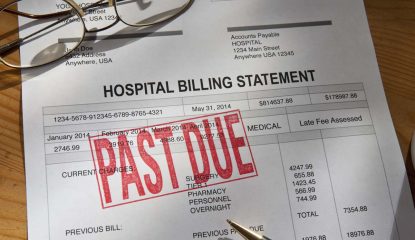Some Insurers Halt Financial Assistance Programs Meant to Make Expensive Medication More Affordable
By Consumers for Quality Care, on April 17, 2024

For consumers with chronic illnesses in need of specialized, and often expensive, prescription drugs, copay assistance programs help keep these medicines affordable. But according to KFF Health News, policy changes spearheaded by some insurance companies are forcing patients to bear the full price of medications that they previously obtained at a discount.
Jennifer Hepworth’s family was shocked when the monthly cost of her daughter’s cystic fibrosis medication skyrocketed from $30 to $3,500. For patients with chronic illnesses who require expensive medications, their financial burden can be eased when drug manufacturers issue coupons to reduce their out-of-pocket cost for the drug. Unfortunately, some insurers will not count the value of manufacturer coupons toward the patient’s annual out-of-pocket maximum, making the cost of life-saving medication unfairly more expensive for consumers when their coupons run out. Advocates argue that these insurance company tactics, known as copay accumulator adjustment programs, or CAAPs, make it difficult for patients with lower incomes to afford the medications they need to treat chronic illnesses.
Nineteen states have passed legislation to combat CAAPs, but many Americans remain at risk because limits set by the states do not apply to employment-based insurance coverage. Bipartisan legislation, such as the Help Ensure Lower Patient Copays Act, aims to extend these benefits for employment-based insurance plans.
Although insurance companies argue this practice is meant to keep health insurance costs down for the larger pool of consumers, patient advocacy groups say that CAAPs may cause consumers to skip taking medications for fear of paying these exorbitant costs.
CQC urges lawmakers and regulators to address bad insurance practices that are driving up the cost of prescription medications, particularly for consumers with chronic illnesses that are costly to treat.




